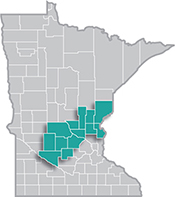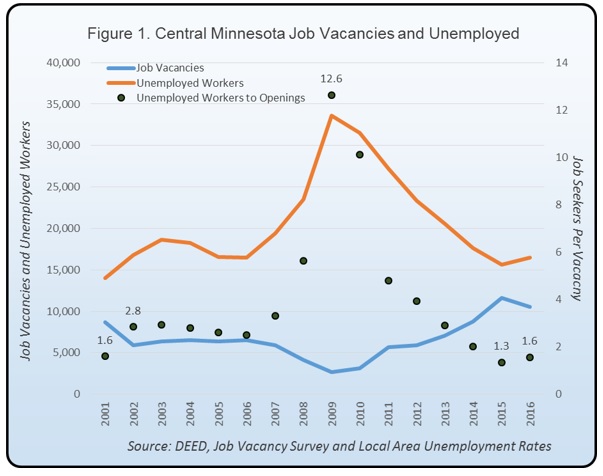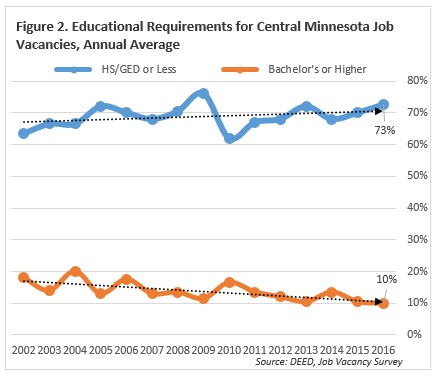 Central Minnesota is a manufacturing stronghold, with several global manufacturing firms operating there.
Central Minnesota is a manufacturing stronghold, with several global manufacturing firms operating there.
The region is especially well known for its expertise in food processing, printing, furniture manufacturing, appliances, machinery and heavy equipment manufacturing.
View our latest blogs on CareerForce. Want the freshest data delivered by email? Subscribe to our regional newsletters.
5/31/2017 10:09:32 AM
Luke Greiner
Central Minnesota businesses are searching for workers, which is good news for job seekers, but is creating challenges for employers. With just under 273,000 jobs reported in both the second and third quarters of 2016, Central Minnesota reached a new employment peak this year, making it the largest region in Greater Minnesota.
However, employment growth slowed from a 1.8 percent increase through the first three quarters of 2015 to just 0.8 percent in 2016 – and it’s not clear why. One plausible explanation for what is causing the slowing employment growth is increasing difficulties filling job vacancies.
Job vacancy data seem to support this explanation, with employers posting about 10,000 job openings in the fourth quarter of 2016, the fifth largest amount dating back to 2001. In fact, four of the five highest vacancy counts have been posted in the past two years, with last year’s count nearly 60 percent higher than the average over the past 16 years.
Even more telling is the ratio of unemployed job seekers to available job vacancies. Prior to the recession, Central Minnesota’s ratio hovered at just under 3 unemployed workers for every job opening. But as the recession began impacting the demand for goods and services, layoffs coupled with decreasing job vacancies increased the ratio to nearly 13 job seekers per vacancy. Since peaking in 2009 the ratio of job seekers per job opening has dropped to just 1.6 in 2016 (Figure 1).

Interestingly, the share of job vacancies in Central Minnesota requiring higher education has remained mostly constant since at least 2002. If anything, the trend appears to be an increasing share of job openings that require a high school diploma or less, versus a declining share of job vacancies requiring a bachelor’s degree or higher (Figure 2).

In fact, there has been a higher proportion of vacancies requiring a high school diploma or less in the last three years of the survey as compared to the first three, from 2002 to 2004. An important nuance to the trends in Figure 2 is that even though the share of jobs requiring a bachelor’s degree or more is declining slightly, the actual number of jobs requiring a bachelor degree or more is higher in recent years than the historical average. Since this is the result of record numbers of job vacancies, the amount requiring a high school diploma or less is also above the historical average.
Contact Luke Greiner at 320-308-5378 or email Luke.Greiner@state.mn.us.